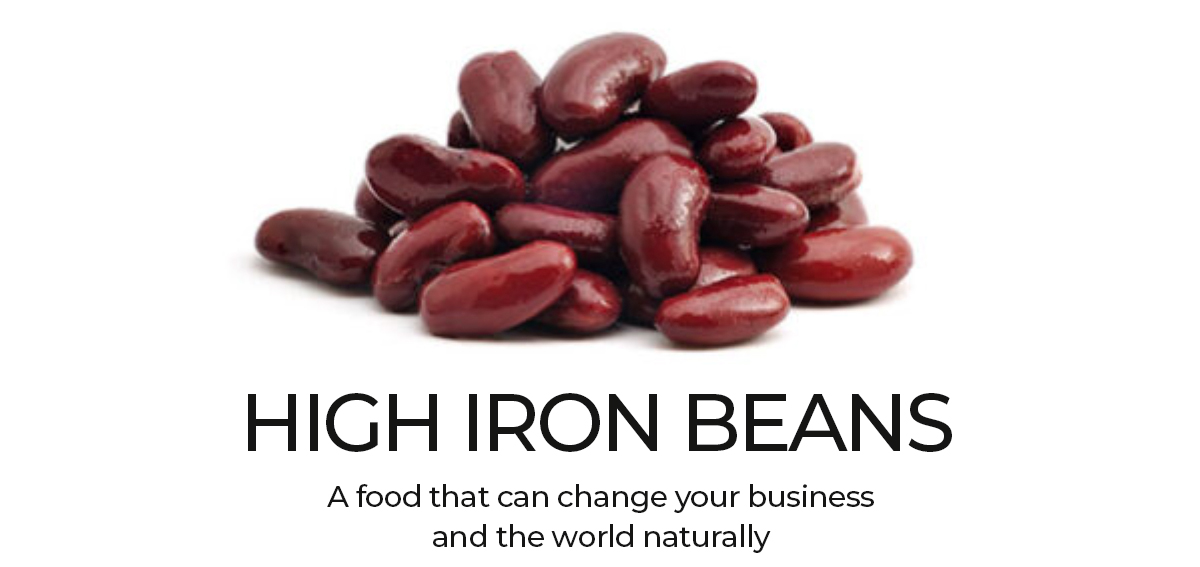February 22, 2023
Biofortification is modern agriculture's latest weapon against malnutrition and a vital asset for farmers. GPC talks to HarvestPlus about creating better global food systems, one seed at a time.


Plant breeding can change the world. In the 1950s, an agronomist named Norman Borlaug developed new varieties of disease-resistant wheat with double the yield of their predecessors. Borlaug was later presented with the Nobel peace prize for his work. It is believed that the changes he brought to agriculture have saved over a billion lives. This groundbreaking development has continued to pave the way for research into new varieties of plants that can support stable food systems that can provide for all.
Calories alone are not enough to help us live healthy, happy lives. In order to thrive, populations need nourishment.

HarvestPlus is an organization with vitamins and minerals at the forefront of its mission. It has set about starting its own agricultural revolution, this time with a focus on ‘biofortification’ — the enhancement of the nutritional content in food. By breeding more nutritious varieties of food staples, it hopes to combat the malnutrition widespread across the developing world.
The impact of poor diets often goes unnoticed but this undernourishment, or ‘hidden hunger’, can lead to stunting, poor pregnancy outcomes, developmental impairments in children and even blindness. Research provided by HarvestPlus suggests that more than 2 billion people are affected by malnutrition, with a greater prevalence in low and middle income nations.
The project began breeding new varieties of various staple foods such as wheat, rice, corn, and beans (of which there are roughly 60 different iron-fortified varieties to date), built on the foundations of a thorough evidence base supporting the positive effects of biofortification. The project is now in phase four: scaling up.
393 varieties of bio fortified crops have been released in 41 countries, but to reach as many consumers as possible, producers must be interested in seeding the new varieties. This means they need persuasive advocates.

Jenny Walton - Head of Commercialisation and Scaling at HarvestPlus
Research provided by HarvestPlus suggests that more than 2 billion people are affected by malnutrition, with a greater prevalence in low and middle income nations.
Nutritionist Jenny Walton became head of commercialisation and scaling at HarvestPlus in 2016 after a long career in food during which she worked for industry giants like Danone and Kelloggs. Part of her current job is to convince farmers to grow HarvestPlus’ biofortified crops. More often than not, Walton says, the crops sell themselves.
"Most of the time farmers love it, because they always want innovation anyway. They're quite open to new things, especially if you show them that the yield is comparable. We always have to develop products that are commercially viable; they have to be competitive on yield and disease resistance, if not better.”
In all the ways that matter, the new varieties are better. Take the biofortified beans: they have a host of different qualities that are an improvement of what already existed on the market: they’re heat- and drought-tolerant and contain up to 90% higher levels of iron, a mineral crucial for maintaining a healthy immune system that can help fend off anemia and ensure normal cognitive development in children. One particular success story is that of Rwanda, where HarvestPlus beans have scaled up to the extent that the biofortified varieties are now the status quo.
It is a no-brainer, says Walton: “Why wouldn't farmers want something cheaper with higher yields? It also has the added benefit of extra nutrition, which is in demand by the commercial markets and consumers.”
“We always have to develop products that are commercially viable; they have to be competitive on yield and disease resistance, if not better.”
Research across many countries suggests that consumers prefer biofortified crops to their less nutritious alternatives. Until now, the majority of fortified crops are found in food systems in the developing world but consumers in the developed world are increasingly seeking extra nutrition in their foods. They do so with good reason; dietary deficiencies are not only found in poorer nations. In the USA, for example, around 17% of women and and 10% of children are reportedly iron-deficient to some extent. In the UK, 23% of pregnant women are reported to suffer anemia.
What is preventing these favorable crops so rich in micronutrients from becoming the universally accepted varieties worldwide? Shouldn’t they be a fundamental part of all of our food systems?
The answer is likely yes, but it isn’t so simple. As a non-governmental organization aimed at alleviating malnourishment in the developing world, part of the HarvestPlus mission was to work with smallholder farmers who could benefit from a new, high-quality crop that could help them as well as the locals who buy from them.
HarvestPlus is a program of the International Food Policy Research Institute (IFPRI), which is part of the Consultative Group on International Agricultural Research (CGIAR), HarvestPlus receives funding from the Bill and Melinda Gates Foundation and both the British and Canadian governments. The founding donors and projects had a priority to improve the health and livelihoods for smallholders through agriculture, now HarvestPlus has moved to a wider food systems impact project and need more donors, private sector partnership, innovation and technology whilst continuing to ensure all work impacts vulnerable consumers.
“When I started talking to small, medium, and large businesses,” explains Walton, “big organizations said: ‘Yeah, we really love it, but where can we get it?’ — there was a huge gap between demand and supply. A lot of my job over the last five years has been bridging that gap. What's holding back business is not being able to get mass production; large businesses don't procure directly from smallholders.”
The dilemma then, is that working with larger producers could be perceived as a disadvantage to the smaller and medium size producers that have been helped up until now. In order to scale up the use of biofortified crops, larger producers would need to be considered. For the larger goal of the program, says Walton, there is no alternative.
“You can't segregate food systems to be just smallholder production and then large, and it doesn't work like that. If you want as many people to buy new varieties, whether seeds, grains or food, you have to work with small, medium and large producers and really make a big dent in the food system.”
The ideal future for the HarvestPlus delivery project is that it eventually brings about its own demise.
“Like most publicly funded or donor funded projects, the idea is to put ourselves out of business,” says Walton.
It sounds strange to those not familiar with these kinds of projects but, once biofortification becomes mainstream, HarvestPlus should have no need to continue. However, at that stage is when the private sector should take over.
'What we want to see is the private sector adopt it and for commercial organizations to become the owners of biofortification, so that any commercial seed varieties will have a nutritional element.'
After HarvestPlus has ceased to be a donor-funded organization, it could become a commercial venture, says Walton; a way in which to make the business of biofortification profitable for the benefit of its own future:
‘We will have a commercial spin off. This is something I'm also working on, because biofortification has so much commercial value. We have to ask how we can exist as a commercial organization that finds profit in biofortification in order to keep innovation going in our services.’ Being part of the wider CGIAR ensures high-quality research and continual investment in nutrition-sensitive agriculture and impactful policies to support the end of malnutrition.
It is easy to see biofortification having a prosperous future in the private sector, given the increased influx of foods that are fortified with extra nutrition. However, fortification through supplementary means is more expensive than simply providing raw material that is higher in nutrition.
On this question, Walton is enthusiastically firm: “Supplementation, although incredibly effective, is expensive and hard to reach the right people. Biofortification, because it's market driven, is sustainable without disadvantages, the currently available varieties don’t use any controversial technologies and it's a sustainable way to impact food systems. There is no drawback!'
Disclaimer: The opinions or views expressed in this publication are those of the authors or quoted persons. They do not purport to reflect the opinions or views of the Global Pulse Confederation or its members.